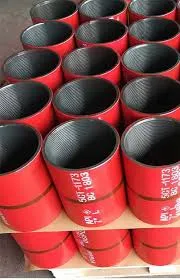- Afrikaans
- Albanian
- Amharic
- Arabic
- Armenian
- Azerbaijani
- Basque
- Belarusian
- Bengali
- Bosnian
- Bulgarian
- Catalan
- Cebuano
- Corsican
- Croatian
- Czech
- Danish
- Dutch
- English
- Esperanto
- Estonian
- Finnish
- French
- Frisian
- Galician
- Georgian
- German
- Greek
- Gujarati
- Haitian Creole
- hausa
- hawaiian
- Hebrew
- Hindi
- Miao
- Hungarian
- Icelandic
- igbo
- Indonesian
- irish
- Italian
- Japanese
- Javanese
- Kannada
- kazakh
- Khmer
- Rwandese
- Korean
- Kurdish
- Kyrgyz
- Lao
- Latin
- Latvian
- Lithuanian
- Luxembourgish
- Macedonian
- Malgashi
- Malay
- Malayalam
- Maltese
- Maori
- Marathi
- Mongolian
- Myanmar
- Nepali
- Norwegian
- Norwegian
- Occitan
- Pashto
- Persian
- Polish
- Portuguese
- Punjabi
- Romanian
- Russian
- Samoan
- Scottish Gaelic
- Serbian
- Sesotho
- Shona
- Sindhi
- Sinhala
- Slovak
- Slovenian
- Somali
- Spanish
- Sundanese
- Swahili
- Swedish
- Tagalog
- Tajik
- Tamil
- Tatar
- Telugu
- Thai
- Turkish
- Turkmen
- Ukrainian
- Urdu
- Uighur
- Uzbek
- Vietnamese
- Welsh
- Bantu
- Yiddish
- Yoruba
- Zulu
Exploring Steel Coupling Techniques for Improved Structural Integrity and Performance
Understanding Steel Coupling An Essential Component in Structural Engineering
Steel coupling refers to a critical component in the structural integrity and performance of various constructions, particularly in civil and mechanical engineering. As a means of connecting structural elements, steel couplings enable the transfer of loads and stresses between different sections of a structure, thereby ensuring stability and strength. This article delves into the types, applications, advantages, and challenges associated with steel coupling, highlighting its significance in modern engineering.
What is Steel Coupling?
In engineering terms, coupling is a device used to connect two shafts together at their ends for the purpose of transmitting power. Steel couplings are predominantly utilized in structures where heavy loads and mechanical stresses are prevalent. They can be found in a variety of applications, including bridges, high-rise buildings, and machinery.
Steel couplings come in various forms, including rigid, flexible, and mechanical. Rigid couplings provide a tight connection between shafts, making them suitable for applications requiring high precision. Flexible couplings, on the other hand, allow for slight misalignments between the connected shafts and help absorb shock loads, making them ideal for dynamic systems. Mechanical couplings often consist of multiple components that help facilitate easy assembly and disassembly, enhancing maintenance capabilities.
Applications of Steel Coupling
The versatility of steel couplings makes them indispensable in numerous fields. In civil engineering, they play a vital role in construction frameworks where beams and columns are interconnected. In bridges, steel couplings are employed to ensure that the loads from vehicles and pedestrians are evenly distributed. Furthermore, in mechanical systems, they connect motors to pumps, compressors, and other machinery, ensuring smooth operation and longevity.
In the field of renewable energy, steel couplings are essential in wind turbines, connecting the rotor shaft to the generator. Their robust design enables them to withstand the dynamic forces exerted by wind, ensuring efficient energy conversion. Additionally, in mining operations, steel couplings allow for the connection of conveyor belts, enhancing the movement of materials.
steel coupling

Advantages of Steel Coupling
One of the most significant advantages of steel couplings is their high strength-to-weight ratio. This property allows engineers to design lighter structures without compromising on strength, ultimately leading to cost savings in material usage. Moreover, steel couplings exhibit excellent resistance to environmental factors like temperature fluctuations and corrosion when adequately treated.
Steel couplings also offer reliability and longevity, which are crucial for structures subjected to continuous loads. Their ability to maintain structural integrity over time reduces the likelihood of failures, potentially saving substantial repair costs and enhancing safety.
Challenges and Considerations
Despite their numerous benefits, steel couplings also present certain challenges. One critical aspect is the need for precise alignment during installation. Misalignment can lead to excessive wear and tear, ultimately compromising the performance of the machinery or structure. Engineers must employ appropriate techniques to ensure accurate positioning during assembly.
Another consideration is the potential for fatigue failure, particularly in applications involving high cyclic loads. Engineers must carefully analyze the operating conditions and select appropriate materials and designs to mitigate this risk.
Conclusion
In summary, steel coupling serves as an essential component in the architecture of our built environment and machinery, contributing significantly to structural integrity and functionality. Its applications span various sectors, from civil engineering to renewable energy, where it provides the necessary strength and reliability. Despite the challenges associated with installation and fatigue, the benefits of steel couplings, such as their high strength-to-weight ratio and durability, make them a preferred choice for engineers. As technology advances, the role of steel couplings in innovative designs and structures will undoubtedly continue to evolve, reinforcing their importance in engineering disciplines.
-
Well Casing Extension Couplings – Applications and InstallationNewsJun.06,2025
-
Types of Crossover Subs in Drilling & CompletionNewsJun.06,2025
-
Key Features of High-Quality Tubing Pup JointsNewsJun.06,2025
-
Installation and Maintenance Tips for Steel Couplings for PipeNewsJun.06,2025
-
How to Select the Right Pup Joint for Oil & Gas OperationsNewsJun.06,2025
-
Applications of Stainless Steel Pipe CouplingsNewsJun.06,2025







